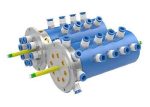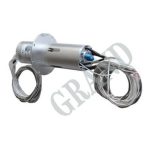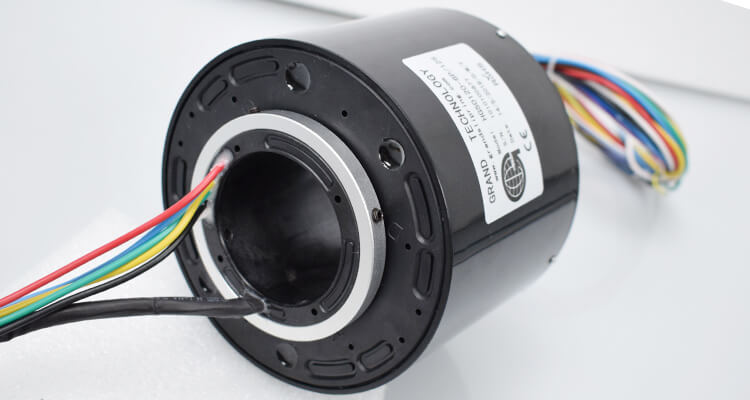In an evolving global marketplace, crucial elements such as trade transparency and precise classification dictate the pace of business operations. As industries broaden their scope and step into international landscapes, they face a labyrinth of trade norms and global merchandise classifications. One such universal classification system governing global commerce is the Harmonized System (HS) Codes. For businesses involved in producing and trading slip ring kits, understanding and effectively applying the relevant Slip Ring Kit HS Code has become a pivotal aspect of their global trade process. This necessity forms the foundation for crafting this article.
The objective of this publication is not merely to elucidate what HS Codes are, but to navigate their specific application to a niche product: slip ring kits. These devices, integral to the functioning of rotating machinery, warrant their own unique identifiers in the world of trade codes, and our purpose here is to demystify these identifiers.
Understanding the HS Codes assigned to slip ring kits offers distinct benefits to businesses that manufacture, supply, or even utilize these components. With this knowledge, entities ensure accurate product classification, consider the totality of their potential tax and duty obligations, and comply with international trade regulations. Equally important, however, is the confidence and peace of mind that this knowledge brings; being able to operate within the global trade network with certainty and maintain the integrity and reputation of one’s business.
In short, this article serves as a comprehensive guide to the HS Codes of slip ring kits. It highlights their critical role in global trade, discusses common issues faced by businesses, and offers practical insights and solutions from seasoned industry professionals. Whether you’re deeply embedded in the sector or just getting your start, this knowledge is an invaluable asset, anchoring your business in the realities of global trade and setting the course for a successful journey within it.
Understanding HS Codes
To comprehend the ins and outs of HS Codes for slip ring kits, we must first direct our attention to understanding what HS Codes are in their broader sense. Created by the World Customs Organization (WCO), the HS (Harmonized System) Codes, or Harmonized Commodity Description and Coding System, form the backbone of global trade. They are essentially a standardized numerical method of classifying traded products, used ubiquitously by customs authorities around the world to identify products for the application of taxes and duties.
The importance of HS Codes in global commerce is immense. They serve as a universal language, allowing products to be recognized and tracked across borders, expedite customs clearance processes, and ensure the correct tariffs are applied to goods. Furthermore, they facilitate international trade negotiations and agreements by providing a clear and consistent frame of reference.
In terms of structure, HS Codes are composed of six to ten digits. The first two digits (HS-2) denote the chapter of the product – such as Animal Products, Mineral Products, or Machinery. The next two digits (HS-4) further define the product category within that chapter. Following them, the next pair of digits (HS-6) gets even more specific, generally indicating the sub-heading of the product. For certain products, there may exist an additional two to four digits, which are specific to certain countries and cater to their unique classification requirements.
Interpreting these codes accurately is therefore paramount for successful and legal trading operations. Misinterpretations or errors can lead to misclassifications, resulting in miscalculations of charges and potentially legal consequences.
Understanding HS Codes thus serves as the first, fundamental step in unraveling the complexity surrounding the HS Codes of slip ring kits. The subsequent sections will delve into these specifics, illuminating practical aspects connected to these important identifiers in the world of international commerce.

Specifics of Slip Ring Kit HS Code
With a basic understanding of HS Codes established, we now turn our focus to the particularities of the HS Code for a slip ring kit. These kits, composed of various differentiated components needed for the formation of a slip ring system, play a crucial role in rotating equipment, enabling the vital transmission of power and signals. Each assembled kit falls under a particular HS Code, which signifies not only what the product is but also the nature of its components, their functionalities, and their materials.
What this code encapsulates has far-reaching implications for global trade. It determines the import and export rules applicable to the kit, governs the applicable customs duties and taxes, and even influences how the constituent components are sourced and assembled. Further, it dictates the data that must be correctly and comprehensively listed on all shipping and customs documents.
Beyond the complete kit itself, it’s crucial to comprehend that individual components within the kit also possess their own HS Codes as dictated by their nature and function. For instance, a slip ring rotor component could have a different code from a brush block or a retaining ring. This level of granularity is necessary for customs and taxation authorities to identify the specific items within a kit and apply the corresponding rules and regulations.
By understanding the HS Code for the entire slip ring kit, as well as the codes for individual components, businesses can ensure that they’re complying with all relevant trade regulations and accurately calculating the costs associated with their import or export activities. Furthermore, this understanding can aid in the strategic sourcing of components based on regional trade agreements or tariff exemptions tied to component-specific HS codes.
=In summary, the HS Code for a slip ring kit, reflecting the nature and variety of components it comprises, is central to the kit’s journey across borders. Familiarity with, and intelligent use of these codes, therefore, lie at the heart of effective, compliant, and cost-efficient trade involving these kits.
Implications of HS Code in the Slip Ring Industry
The ramifications of employing correct HS Codes in the slip ring industry are manifold. The foremost implication relates to imports and exports, which form the lifeblood of international trade. Accurate usage of HS Codes streamlines these processes, enabling customs authorities to swiftly identify and clear goods, minimize delays, and expedite their journey through the supply chain.
The second major implication relates to the financial aspects – specifically to customs duties and taxes. By using the appropriate HS Code, businesses can ensure they’re calculating these costs accurately, avoiding underpayment that can result in penalties or overpayment that unnecessarily inflates operational costs.
It’s also worth taking a moment to discuss the potential impact on trade compliance. Each country has its own regulations for importing and exporting goods, and an incorrect HS Code can potentially lead to non-compliance with these laws. This could result in legal implications, along with damage to the company’s reputation and its business relationships.
In our experience, a common error enterprises commit is either literally translating a product’s description into an HS Code or relying on past entries without considering updates in the system. Other frequent missteps include failing to classify parts and subparts separately or using the code for an incomplete product for the finished product. Each of these errors can lead to severe consequences, including fines, holds, and audits.
To avoid such pitfalls, we suggest businesses invest in an ongoing learning process, keeping up-to-date with HS Code revisions, which generally occur every five years. Engaging with a knowledgeable customs broker or a trade compliance specialist could be beneficial to ensure a thorough understanding of HS Codes and their application. Companies should also consider conducting regular internal audits of their HS Code usage to ensure accuracy and prevent future problems.
=Taken together, the HS Code serves as a cornerstone in the slip ring industry and its thoughtful, correct application serves as a primary determinant of a company’s international trade success. Awareness of its significance, a proactive approach to learning and adhering to changes, and the pursuit of professional expertise are all crucial elements in ensuring successful business operations in this industry.
Slip Ring Kit HS Code Experience from Professionals
Professionals who design and manufacture slip rings provide valuable insights and anecdotes that could prove beneficial in understanding the usage and implications of HS Codes in the real world. Their experiences enrich our comprehension, revealing how mistakes can be avoided and what measures best serve to align a business’s operations with global trade norms.
For instance, one professional recounts an early misstep in their trade journey, involving an overpayment of import duties due to a lack of knowledge and accuracy in the HS Code application. This costly mistake led to the realization of the critical need for professional advice in trade transactions and the decision to engage the services of a specialized customs broker.
Another seasoned manufacturer highlights the significance of understanding the distinction between the HS Codes for various components in a slip ring kit. Overlooking this aspect, they explain, can lead to incorrect calculations of duties and even accusations of trade-law violations, potentially attracting fines and other penalties.
Across the board, these professionals emphasize that learning experiences and even setbacks have underscored the undeniably critical role of HS Codes in their business operations – from manufacturing right up to after-sales service.
Speaking of lessons learned, veterans of the slip ring industry repeatedly underscore the necessity of staying current with changes in HS Codes. As these codes can be updated every five years by the World Customs Organization, failing to stay abreast of these changes can result in misclassification, incorrect tariffs, and legal complications. Industry experts recommend attending seminars, subscribing to the WCO newsletter, and maintaining a direct line of communication with local customs authorities in order to stay updated and compliant.
In conclusion, the collective experiences of professionals serve to add tangible color and shape to our understanding of HS Codes’ role in the slip ring industry. They offer a testament to the far-reaching implications of effectively navigating this intricate world and further underline the importance of professional advice and continuous learning in mastering the game of international trade.
Common Concerns About Slip Ring Kit HS Code

Several common concerns and queries often arise when it comes to the HS Code for slip ring kits. However, equipped with insight and guidance, these challenges can be navigated efficiently and effectively.
One frequent concern users grapple with is the fear of misclassification, primarily due to the multi-component nature of slip ring kits. Users are understandably anxious about potential misinterpretation of HS Codes. Accurate classification is essential to avoid penalties, delays in shipment, and incorrect tax calculations.
To address this concern, users are advised to adopt a two-step approach. First, familiarize yourself with all the components in the slip ring kit and understand their individual functions and materials. Secondly, consult the HS Code manual or seek advice from experienced brokers or trade compliance officers to ensure accurate assignment of HS Codes. Cross-checking the assigned codes against multiple sources can further bolster confidence in the accuracy of the classification.
Another common concern stems from staying updated with changes in HS Codes. Users often ask, “How do I manage to stay informed about any updates that take place in the HS Code system?”
For this, there are various resources available. Leveraging a direct line of communication with local customs authorities or subscribing to the World Customs Organization’s newsletters ensures you’ll be promptly informed of updates. Participation in webinars, workshops, and trade seminars can also help users stay abreast of the latest changes and interpretations in the realm of HS Codes.
Lastly, a seemingly simple but often neglected aspect is documentation. Many users are unsure of where and how to document HS Codes. It’s important to remember that the HS Codes of the slip ring kit and all individual components, where applicable, should be accurately and conspicuously displayed in all relevant shipping and customs documents.
By understanding potential concerns and learning how to navigate through them, users can alleviate the most common worries related to slip ring kit HS Codes, fostering smoother and more confident international trade transactions.
Conclusion
Mastering the specifics of HS Codes for slip ring kits isn’t just about compliance; it’s about developing a successful, sustainable business that can operate smoothly on a global stage. We urge businesses and traders to stay informed, to be diligent in their application of these codes, and to never underestimate the value of expert advice.
Embrace this often-overlooked aspect of international trade to your advantage. Whether you’re an industry veteran or a business venturing into the global arena, the right understanding of HS codes is an invaluable asset in your toolkit.
See What We Can Do

